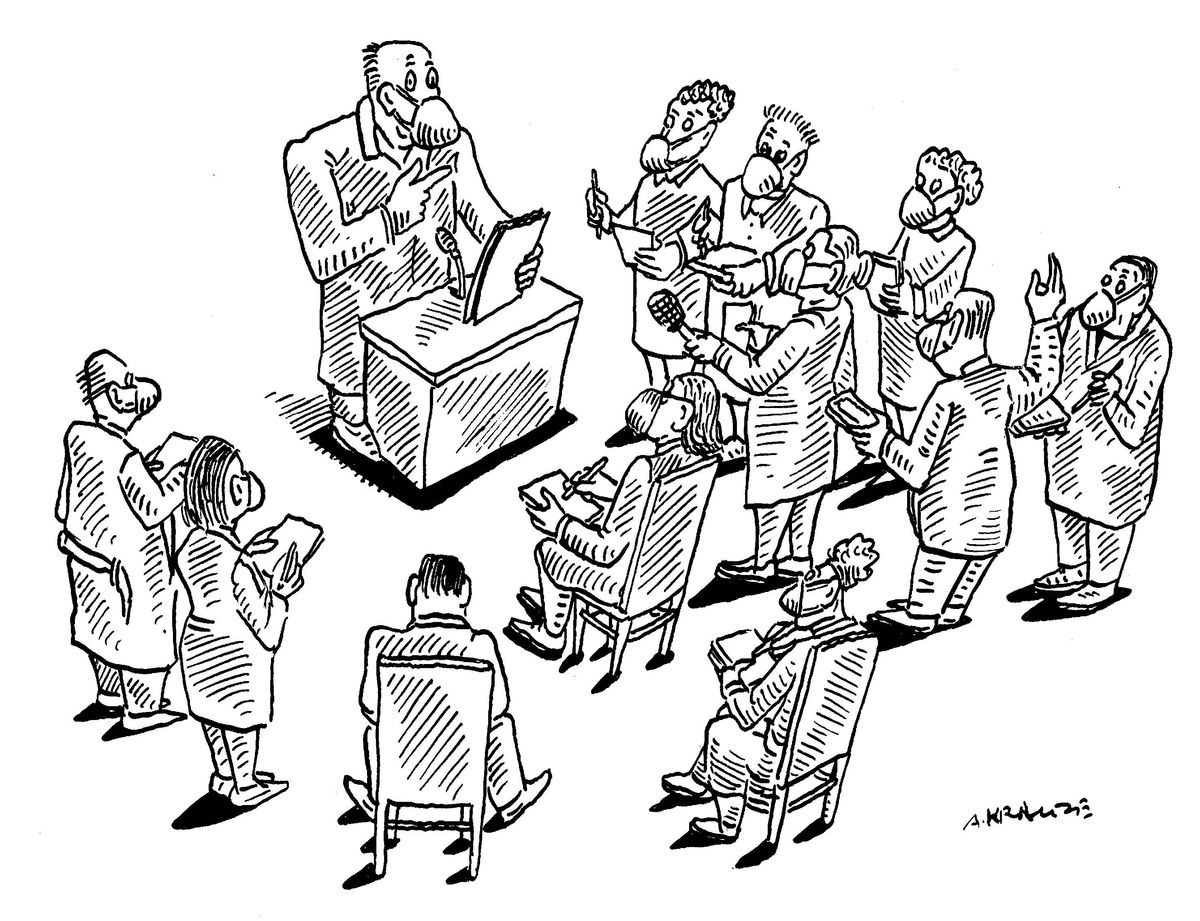ABOVE: © ISTOCK.COM, ajijchan
With January’s Omicron wave behind us, giant research organizations have again decided to hold their annual conferences in person. I started writing this dispatch from the bowels of the immense Ernest N. Morial Convention Center in downtown New Orleans in mid-April. I was there, with more than 14,000 attendees involved in the enterprise of cancer science, to attend the annual meeting of the American Association for Cancer Research. The AACR and similarly sized groups have held their massive meetings virtually for the past two years as the pandemic engulfed the world, shuttering labs and scuttling events around the globe.
This year, the AACR jumped back into the fray and invited its sizeable community into a common space to share, collaborate, and network. Over the years, I’ve been to several AACR conferences and meetings of other large, professional organizations to cover the proceedings, speak with researchers, and keep tabs on the latest discoveries in various fields. I’ve always enjoyed the feeling of camaraderie and celebration. There is a certain buzz that even I, as someone who writes about the work rather than actively participating in it, can access as it circulates among people who are focused on a collective mission to understand some aspect of biology, often to stamp out disease. This year, though, heading back into one of these mega-conferences—after such a tumultuous period in world history and such a long break from those feelings of community and shared purpose—felt different.
The thought of tiptoeing back into the world of face-to-face meetings stirred a certain anxiety in me. It wasn’t just the vague fear of contracting COVID-19 and potentially infecting vulnerable people in my life. I’d learned to live with that feeling as a constant companion over the past two years. Travelling to AACR and leaping headlong back into the world of personal interaction after living more than 24 months with a screen between me and essentially anyone I spoke with in a professional capacity added a new dimension to my apprehension. Sure, since the pandemic’s start, I had travelled on public transit, had attended some less-than-full-capacity, open-air affairs such as sporting events, and had indulged in outdoor dining experiences with fellow humans. But nothing like willfully entering a yawing inside space where thousands of other people would be showing up intent on interaction.
Being able to see and hear and feel the presence of fellow humans who share passions and pursuits . . . is something that is hard to replicate, no matter how innovative the virtual platform.
Apparently, I was not the only one harboring such feelings. At the meeting, an AACR spokesperson shared with me an estimate that more than 14,000 people were in physical attendance at this year’s conference. AACR counts more than 50,000 members in its ranks, and prior to the pandemic, its annual conferences were typically attended by more than 30,000 people. International travel difficulties, widespread weather delays in domestic travel, and at least one case that I learned of where a presenter contracted COVID-19 just prior to the meeting likely contributed to curtailing the number of conference-goers this year.
As I boarded my flight to New Orleans, I noticed a smattering of students shoving poster transport tubes into overhead compartments, and it became more real that this was actually happening. Upon landing at Louis Armstrong Airport, that realness intensified. I soon stood in a blocks-long line for a taxi, knowing that many of these vehicles would be ferrying my fellow AACR attendees to their accommodations.
The in-person conference required that attendees provide proof of COVID-19 vaccination, evidence I was only too happy to supply as I finalized my registration for the meeting. And when I arrived at the conference center for the first time the morning after arriving in New Orleans, I was pleased that the greeters who checked my credentials also asked to see the QR code that was generated when I had uploaded photos of my vaccination card prior to travelling to the conference. I was also heartened to see that most of the people that I saw at the meeting on that first day were wearing masks.

The anxiety that I had felt in the lead-up to the AACR meeting continued to dissipate as I attended symposia and lectures at the meeting and navigated the halls, observing the apparent happiness that pervaded the gathering. Long-Zooming colleagues greeted each other, hopeful neophytes approached established figures, and practitioners reveled in sharing insights and discoveries directly with past, present, and future collaborators. Even though this year’s meeting attracted only about half the normal number of attendees, the buzz at this long awaited in-person version of the conference seemed to exceed that of its prepandemic iterations. The assembled crowd appeared to feel enhanced joy at being able to shake hands, applaud well-delivered presentations, and partake in a coffee and an intimate conversation.
Scientists and science journalists alike have made do for the past two years, collaborating in and covering research from our homes using modern technology to connect outside the boundaries of physical interaction. One certainly can’t complain, as there are still many people in communities across the globe who aren’t privileged enough to have access to such tools. And the pandemic has exacted a much more sobering toll from millions of people. But I must say that being able to see and hear and feel the presence of fellow humans who share passions and pursuits, such as understanding biology and trying to treat the ills that befall too many people, is something that is hard to replicate, no matter how innovative the virtual platform.
I sincerely hope that the future, with COVID-19 and perhaps other pathogens as persistent threats, will feature more such interactions and that we humans will find ways to assemble in the spirit of peace and discovery despite the forces that conspire to separate us.


